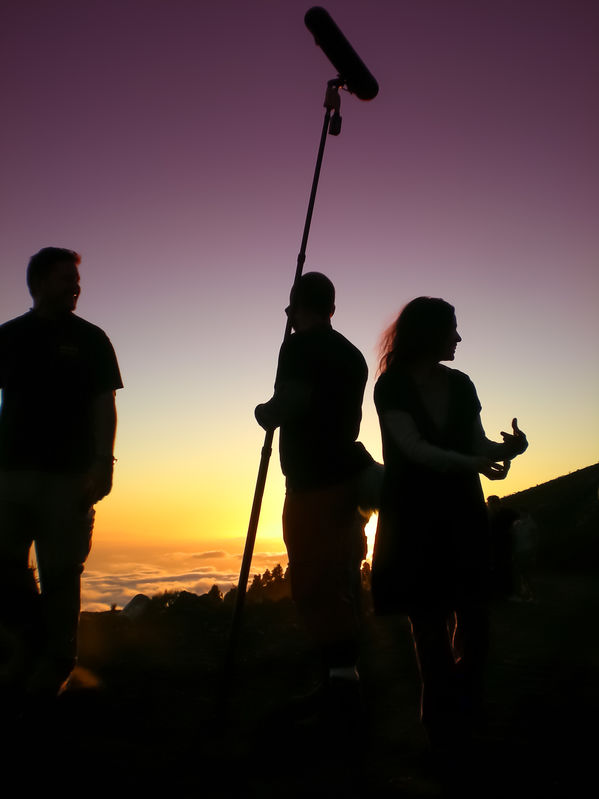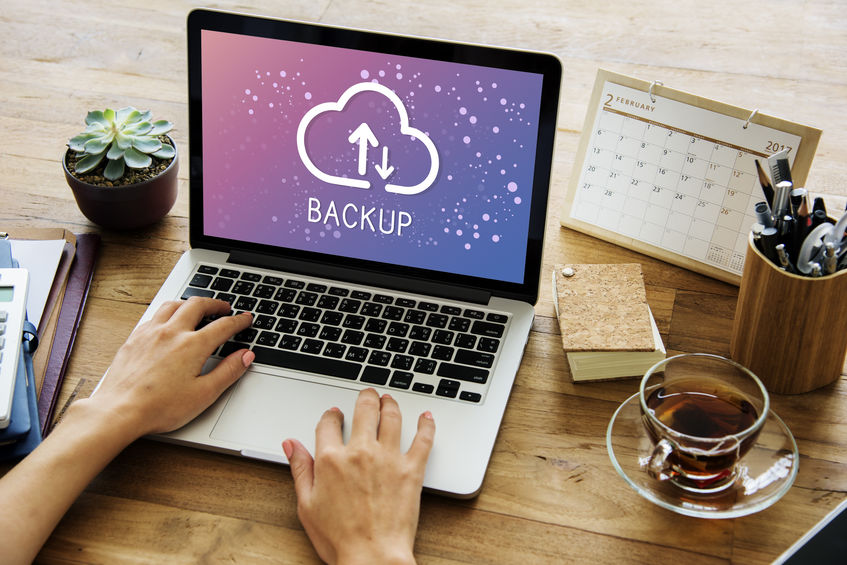Technology today is advancing at a rate not previously recorded in history. The Law of Accelerating Returns applies to the exponential growth of technology. With every advancement, every cutting-edge product, humanity effectively shortens the time to the next advancement thanks to the increasing wealth of tech we have to rely on.
But, with rapid change comes rapid obsolescence, and technologies that just a few years ago were top-of-the-line are now junk collecting dust in the collective basement of society. So, where does that leave filmmakers?
No question, film production is a technologically reliant industry, so with general technological progress comes advancement in camera, editing software, plugins, visual effects, etc. This inevitably begs the question: With all this whirlwind forward momentum, how do you keep your content (film, music video, web series, etc.) from falling behind on the times, from looking and feeling outdated after just a few years?
In order to completely future-proof your video content, there are three types of future-proofing to consider.
The first type deals with the quality of your film. Shooting in 4K or higher is a must to keep our video looking cutting-edge for the foreseeable future. Also, from a sound standpoint, having both a stereo and 5.1 mixes is a good way to cover all possible delivery methods: 5.1 for theaters, stereo for the widely popular and ubiquitous soundbars.
The second type is making sure to use the most modern delivery avenues to reach an audience. Streaming services and online delivery are the most efficient and cost-effective ways to reach the largest audience rather than the nearly obsolete method of pressing DVDs.
Finally, the third type is being aware of where you save your media for future use. Redundancy is important, so saving it on a mixture of digital and physical platforms is necessary.
If it seems overwhelming, worry not, for I will break this down in detail below.
Future-Proofing Type 1: Quality of Media

Video Resolution
These days, the visual quality of recorded media in terms of pixel density has spiked to levels so detailed, most televisions can’t even match them.
Some cameras are shooting up to 16K quality footage, and the best TVs right now can only do half that at 8K, and even these are not readily available to most consumers thanks to price tags of $15,000+, leaving most everyday people preferring to stick with the much more affordable 4K television option.
But, as breakthroughs continue to happen in the years to come, so too will public access to previously unaffordable or unwieldy technology. Someday, 8K (and higher) TVs will be the norm.
In order to keep your video media as cutting-edge as possible in this very near future, it is important to shoot on the highest quality cameras you can get your hands on. Maybe 16K is overkill (and expensive!), but, at minimum, you should be shooting at 4K to keep up with today’s standards if nothing else.
If you’re shooting at 1080, you’re already limiting yourself from the outset. 1080 is last gen. It was the modern minimum 2-4 years ago, but not today.
Sound

This one is easy to overlook, but the sound mix plays a part in the future-proofing of your media as well.
You may think sound is sound, that it hasn’t changed apart from the recorders and mics, which today capture crystal clear audio. That’s true, but it’s the mix that’s important, and because of this, sound acts as sort of a bridge between Future-Proofing Type 1 and Type 2, which I’ll talk about in a bit.
First off, the two most important mixes to have for future-proofing your media are a 5.1 and a stereo mix.
5.1 surround sound is the absolute best mix for a theatrical experience. It divides the sound into five channels. The dialogue takes center channel, sound effects take front-right and front-left, and the music score takes back (or side) right and left.
This is why, apart from screen size, movie-going experiences in theaters are so immersive and powerful. The mix is designed especially for them.
Stereo is just as important for home setups. Back in the early 2000s, the home theater craze was real. Film enthusiasts and La-Z-Boy lovers were investing in comfy seating, plasma screen TVs, and 5.1 speaker setups before settling down with their popcorn to enjoy The Matrix.
But it quickly became apparent that 5.1 home theaters weren’t making headway outside of this niche market; they were too hard to set up for the average Joe, and so the craze died before the first decade of the 2000s was out.
Fast forward a few years and the remarkably user-friendly soundbar has almost completely taken over the home entertainment market thanks to its ease of use. This is where your stereo mix comes in.
Despite clever marketing tactics (Experience theatrical sound in your living room!), the soundbar is essentially 4 speakers placed directly in front of you.
This is not conducive to a 5.1 setup. So, to future-proof your content (and bridge the gap to Future-Proofing Type 2), you have to make it sound good in all manner of viewing formats—theater and home. 5.1 mix for the theater, stereo for the home.
Which brings us to…
Future-Proofing Type 2: Use Modern Delivery Services

This type of future-proofing is based less on the quality of your media, and more on its accessibility. Chances are you didn’t make your film/web series/music video with a shelf-life in mind. Watch till 2020 and then delete it when expired. No, like all creators, you want it to last.
To do this, you need to utilize the most modern delivery services available to deliver your media. Luckily, at least for now, this is pretty easy.
Where back in the day underground creators were pressing DVDs and handing them out to strangers on the street, today’s methods of getting your work out there are quite a bit less cost and effort-heavy. Creators of today have access to a whole swath of streaming services, many free and specialized to certain types of media.
The best way to future-proof your content’s watchability is to get it on as many of these services as you can. YouTube and Vimeo should be a given. Both are free, and both have wide viewer bases.
Tip: if you want to make your video look the best on YouTube in terms of codecs, I would recommend you read our article How To Get Better Image Quality On Your YouTube Videos.
After that you can check out the more specialty services, or, if you’ve got a solid producer or producing savvy yourself, you can try your luck with the big platforms: Netflix, Amazon Prime, Hulu, etc.
With streaming platforms taking over a large percentage of modern TV time, this is the most ideal route to get your media in front of as many eyes as possible for the foreseeable future.
Future-Proofing Type 3: Backups and Redundancy

The final type of future-proofing I want to talk about is the saving of your media in a method that will be salvageable years from now.
What this used to mean is backing up your media offline to DVDs or disks. While this may be a viable option as a triple-redundancy or greater, most high-quality media today is simply too big to fit on a DVD and potentially even a Blu-ray, and more and more computers today are being sold without disk drives of any kind.
Remember, saving your media is not enough, you have to be able to access it years down the line. So we need a different method.
Enter the cloud. Microsoft, Google, Apple, and Dropbox, have heavily invested in cloud-based services. Apart from saving a copy of your media, it also gives you access to it nearly anywhere with an internet connection.
But don’t stop there, what if those services close down? Don’t put all your trust into the hands of a company. They come and go, even the giants.
Redundancy is the key, meaning you want your media backed up in multiple places that will all be accessible for at least four to five years from now, and some of these should be places only you control.
The best locations for offline backups are hard drives and flash drives. USB is mainstream and computers can’t run without hard drives for storage, so it’s safe to say that at least for the next five years (probably longer) unless something radically changes in the makeup of computers, external hard drives and flash drives made today will be compatible for tomorrow.
By using at least two of these three methods—cloud, hard drive storage, flash drive storage—you will have enough redundant copies to make sure your media lasts for the future. And if you feel that’s not enough, then make multiple copies to multiple drives until you’re content your media is safe.
Always remember backup, backup and backup!
Conclusion
With this guide, you should be all set for a complete future-proofing of your media in every conceivable aspect: visual and audio quality, viewability and delivery, and through backup and redundancy.
The technological landscape is always changing, and, through it, the media landscape as well. In order to stay relevant, competitive, seen, and to archive, your work for posterity, understanding of the cutting-edge coupled with a modicum of foresight is necessary to keep your work fresh and available for as long a period as possible.
Got any other methods or ideas for future-proofing that I haven’t discussed? Share your wisdom in the comments below!

